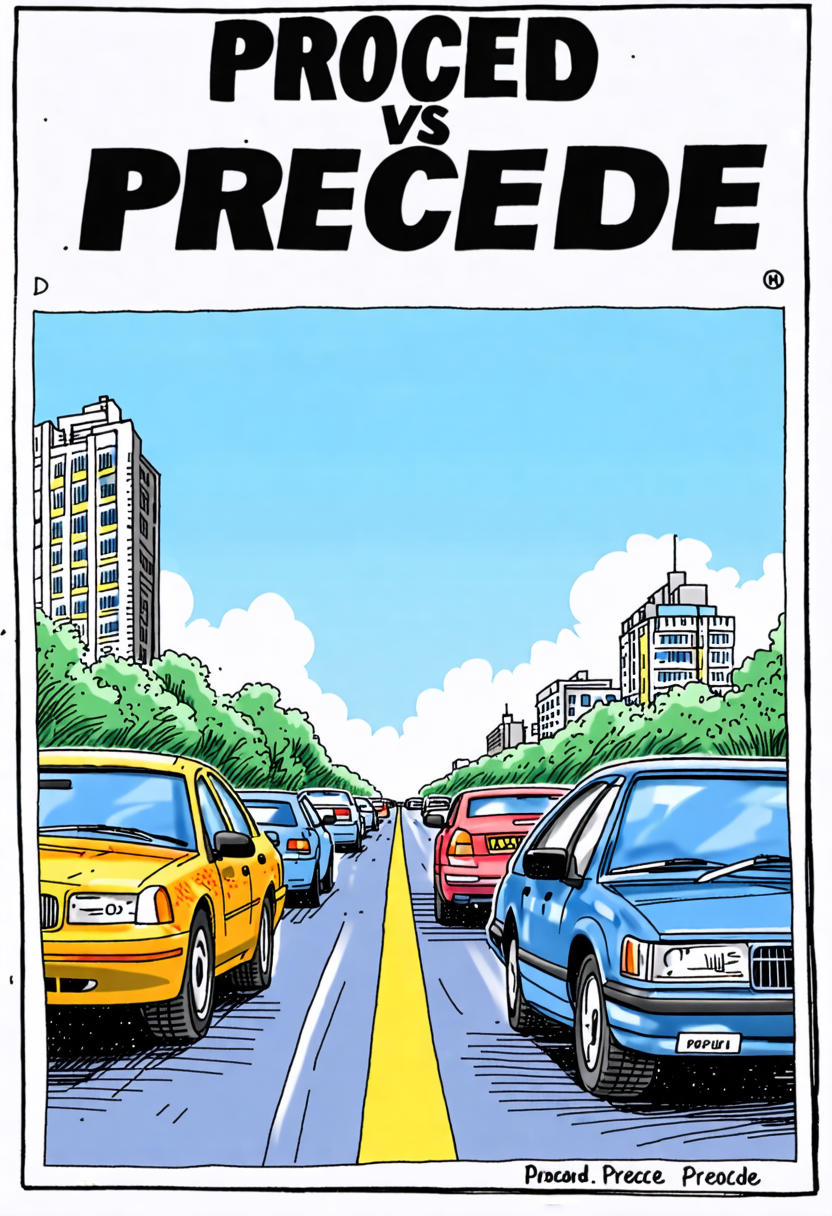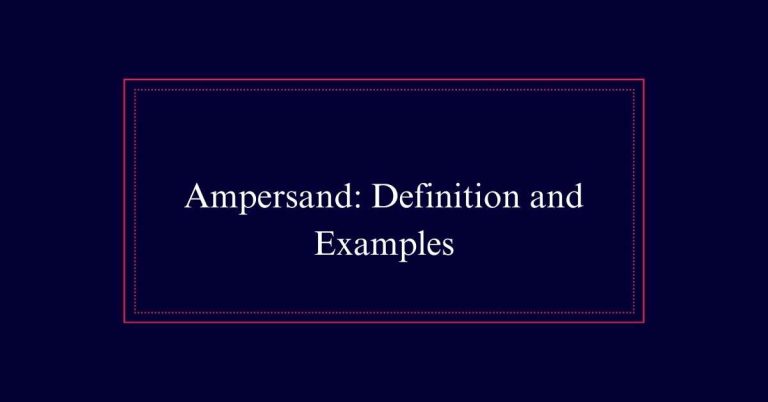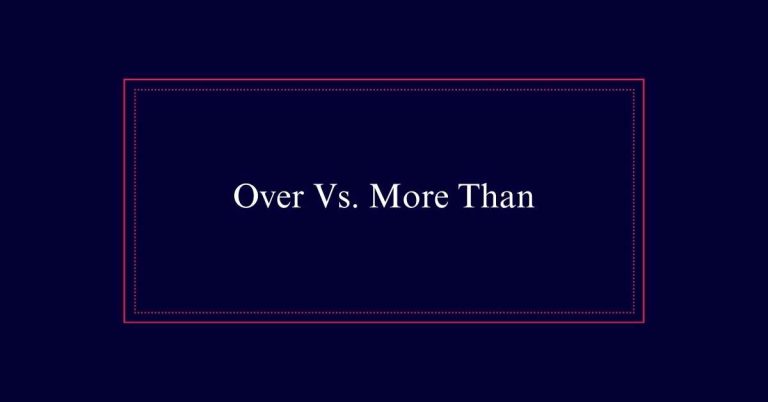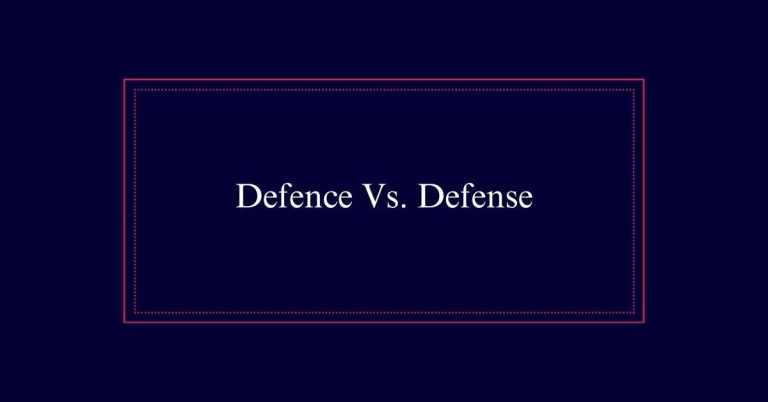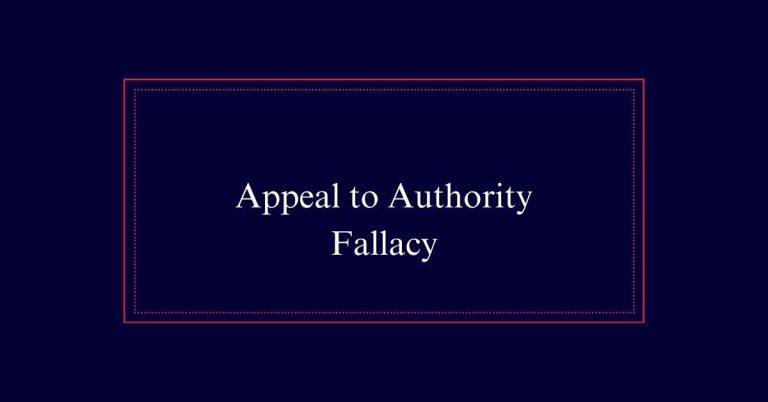Proceed Vs. Precede
‘Proceed’ and ‘precede’ are often confused but have distinct meanings. ‘Proceed’ means to continue or begin a course of action, such as ‘We will proceed with the meeting after lunch.’ ‘Precede’ means to come before something in time, like ‘The appetizer precedes the main course.’ Pronunciation differs as well: ‘proceed’ stresses the second syllable, while ‘precede’ stresses the first.
Definitions of Proceed and Precede
The words ‘proceed’ and ‘precede’ have distinct definitions that are important to understand for proper usage. ‘Proceed’ means to begin or continue a course of action. It is often used when describing the next steps to be taken. For example, ‘After the meeting, we will proceed with the project.’
On the other hand, ‘precede’ means to come before something in time. It is used to describe events or items that occur earlier. For instance, ‘The introduction will precede the main presentation.’
Pronunciation Differences
Understanding the definitions of ‘proceed’ and ‘precede’ lays the foundation for recognizing their pronunciation differences. Though they may seem similar, the distinction is subtle yet significant.
‘Proceed’ is pronounced with an emphasis on the second syllable: /prəˈsiːd/. In contrast, ‘precede’ places stress on the first syllable: /prɪˈsiːd/.
Consider these key points:
- Stress Patterns: ‘Proceed’ emphasizes the second syllable, while ‘precede’ emphasizes the first.
- Vowel Sounds: ‘Proceed’ begins with a schwa sound (/prə-/), whereas ‘precede’ starts with a short ‘i’ sound (/prɪ-/).
- Syllable Emphasis: Misplacing stress can lead to confusion in meaning.
Usage of Proceed
Proceed is often used to describe the act of beginning or continuing an action or process. It implies moving forward or advancing in a course of action. For example, ‘After the meeting, we will proceed with the project.’ Here, ‘proceed’ indicates that the project will begin or continue after the meeting.
Additionally, ‘proceed’ can be used to give instructions or permissions. For instance, ‘You may proceed to the next step’ clearly indicates moving on to the following phase.
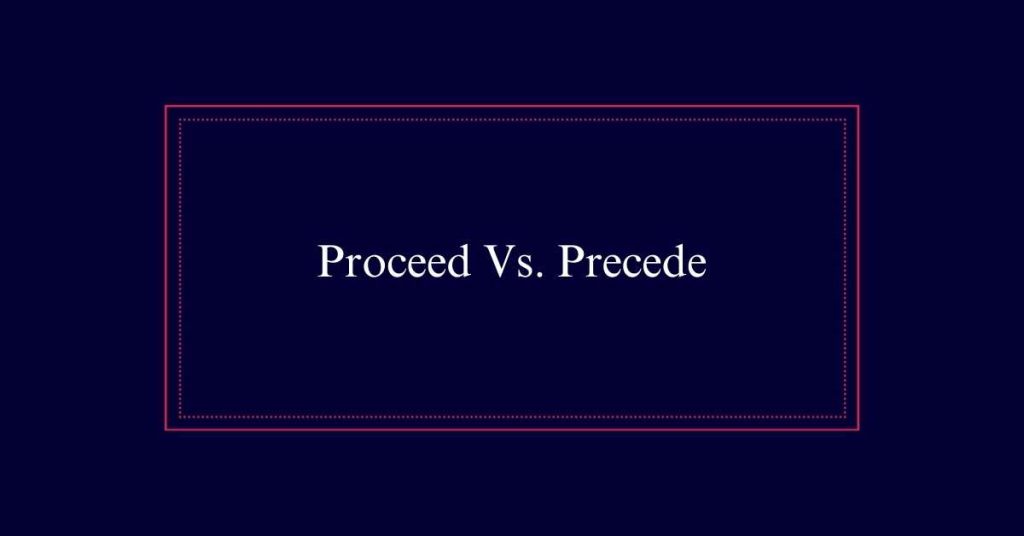
Another common usage is in formal contexts, such as ‘Please proceed to the nearest exit’ during emergency announcements. In all these cases, ‘proceed’ emphasizes the continuation or initiation of an action or sequence of steps.
Usage of Precede
Before an event or action occurs, something that precedes it happens earlier in time. The term ‘precede’ signifies an occurrence that comes before another. For example, a prologue precedes the main text of a book. Using ‘precede’ accurately can enhance clarity in communication.
Consider these scenarios:
- Historical Events: The signing of the Declaration of Independence preceded the Revolutionary War.
- Daily Routines: Breakfast usually precedes daily activities.
- Formal Procedures: An introduction often precedes a formal speech.
Action Vs. Time
Distinguishing between ‘proceed’ and ‘precede’ hinges on their association with action and time, respectively. ‘Proceed’ is tied to actions and movements. It signifies the continuation or initiation of an activity. In contrast, ‘precede’ relates to time, indicating something that comes before another event.
Here is a table to illustrate:
| Word | Meaning |
|---|---|
| Proceed | To begin or continue an action |
| Precede | To occur before in time |
| Example 1 | Proceed to the next step |
| Example 2 | The meeting precedes the lunch |
| Clue | Think of action for proceed |
Common Confusions
Many people often confuse ‘proceed’ with ‘precede’ due to their similar pronunciations and spellings. This confusion can lead to misunderstandings in both written and spoken communication. Here are three common scenarios where this mix-up often occurs:
- Sequential Events: People might say ‘proceed’ when they mean an event ‘preceded’ another.
- Instructions: Misuse in guidelines, such as ‘precede to the next step,’ can confuse readers.
- Formal Writing: In academic or professional documents, incorrect usage can undermine credibility.
Tips to Differentiate
Recognize the difference between ‘proceed’ and ‘precede’ by focusing on their distinct meanings related to action and time.
‘Proceed’ is used when referring to the continuation or commencement of an action. For example, ‘After the meeting, we will proceed with the project.’
On the other hand, ‘precede’ denotes something that occurs before another event in time. An illustration is, ‘The meeting will precede the project launch.’
To differentiate, remember: ‘proceed’ is about moving forward, while ‘precede’ is about coming before.
A useful tip is to link ‘proceed’ with ‘progress’ (both action-oriented) and ‘precede’ with ‘previous’ (both time-related). This association helps clarify which term to use based on context.
Related Words and Clues
Often, related words and contextual clues can help you distinguish between ‘proceed’ and ‘precede. Recognizing these words provides a framework for understanding their meanings and proper usage.
Here are three helpful clues:
- Procession: This word is related to ‘proceed’ and suggests moving forward in a sequence.
- Precedent: This term is linked to ‘precede’, indicating something that comes before and serves as an example.
- Succession: While not directly related, it implies a sequence where one thing follows another, helping you remember that ‘proceed’ relates to moving forward.
Examples of Proceed
Proceed is commonly used to indicate the continuation or initiation of an action. For instance, in a meeting, the chairperson might say, ‘Let’s proceed with the agenda,’ meaning to continue with the planned activities.
Another example is, ‘After receiving approval, the team will proceed with the project.’ This usage shows that the team will begin or continue their work.
Additionally, in a courtroom, a judge may instruct, ‘Please proceed with your testimony,’ signaling the witness to continue speaking.
In everyday life, you might hear, ‘Once you finish your meal, you can proceed to dessert.’ Here, it means to move on to the next course.
Examples of Precede
Precede is used to describe something that occurs before another event or action in time. For instance, in education, preschool precedes kindergarten, marking the initial stage before formal schooling. In literature, an introduction often precedes the main content, setting the context for readers.
Here are three compelling examples:
- Historical Events: The Renaissance preceded the Enlightenment, laying the groundwork for modern thought.
- Daily Routine: Breakfast typically precedes the day’s activities, fueling the body for what lies ahead.
- Planning: Thorough research precedes project development, ensuring informed decisions are made.
